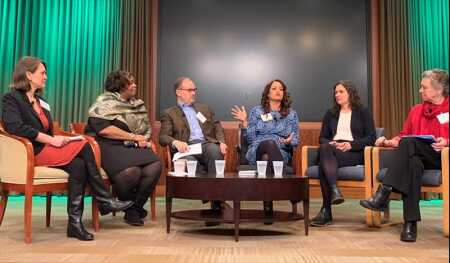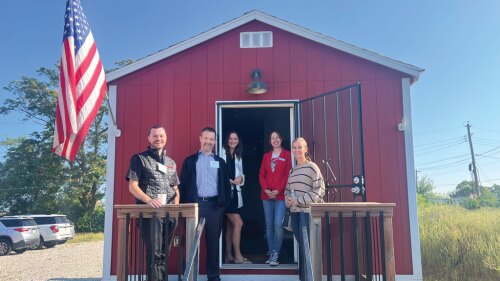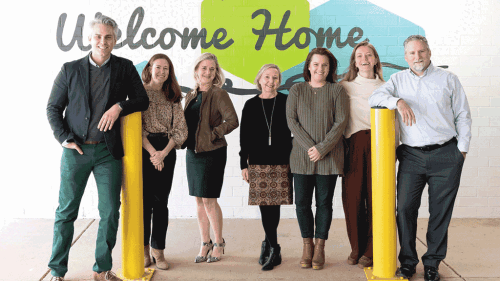Stakeholders who have worked to push for more affordable housing know firsthand that it can often be a contentious issue. But what if there were a way to avoid strategies that “backfire” and instead leverage more effective messaging to build public will and get people excited about providing high-quality housing for everyone? Advocates for more affordable housing described what methods are working for them, including the recent zoning changes in Minneapolis, at a recent ULI Minnesota event.
The 10th annual ULI Minnesota Housing Summit tackled the messaging issue head-on with a discussion titled, “Why Housing Messages Are Backfiring and 10 Things We Can Do about It.” Preserving and growing the supply of affordable housing is a topic that is at the forefront nationally. A statewide Minnesota Housing Task Force has set a goal to add 300,000 new homes of all types, prices, and locations by 2030 to meet the growing need in the state, and better messaging is part of that strategy.
“Across every region of the country, we are facing major housing challenges,” said keynote speaker Tiffany Manuel, vice president of knowledge, impact, and strategy at Columbia, Maryland–based Enterprise Community Partners. Those housing challenges include surging costs and a lack of affordable options, displaced residents, and the need to revitalize distressed neighborhoods where affordable options exist, but no one wants to live there.
Technology is creating exciting new solutions to affordable housing development. The bigger challenge is how to get people to “come to the party” and support that development in their neighborhoods and communities. “Building public will is probably one of the most critical issues of our time for a variety of reasons,” said Manuel. Chief among those reasons is the current climate of big disruptive changes that are here now, with more around the corner ranging from autonomous vehicles to 3-D printed homes that are changing the economy and society in general.

From left to right: Janne Flisrand, Neighbors for More Neighbors; Tiffany Manuel, Enterprise Community Partners; John Breitinger, Cushman & Wakefield; Maria Regan Gonzalez, mayor-elect of Richfield, a suburb of Minneapolis; Lisa Bender, Minneapolis City Council president; and moderator Colleen Carey, president, the Cornerstone Group, speaking at the 10th annual ULI Minnesota Housing Summit. (Amanda Janzen/ULI Minnesota)
Adapting to Change
The main theme for Manuel’s keynote address was how leaders can help their communities adapt to change that is coming. There are many stakeholders and competing interests that include government agencies, developers, employers, and neighbors who need to come together and devise solutions. How do you get those different competing interests to embrace change constructively? The solution requires engaging people more thoughtfully than ever before, noted Manuel.
One of the reasons community members don’t show up to support public housing is that housing messages are simply not working. The discussion on affordable housing often focuses on low-income people who are struggling. However, data show that middle-class families also are struggling. Why are tax dollars going to help low-income people only, when middle-class families also feel like they need help and are overlooked? So, in that type of environment, it is easy to see how traditional messages can backfire, noted Manuel.
For example, traditional thinking was that statistics that show the need for affordable housing was a sure win. Yet, knowing the severity of the problem doesn’t bring people to the table. In fact, it depresses engagement, because people are already so overwhelmed with big issues and a barrage of crises every time they turn on the news, said Manuel. Another common misstep in messaging is creating separate fates rather than aligning interests in a community. Why should my tax dollars go to help “those people”—what’s in it for me? she said.
Engaging Effectively
Stakeholders need to learn how to advance better narratives that are more effective at engaging the community and building support. Some of those changes are substantive, such as creating policies to prevent displacement, while others are more subtle modifications to the narrative.
For example, the city of Minneapolis made national headlines in December when the city council passed a new ordinance that changed its single-family zoning requirement, opening it up to allow for three units to be built on residential lots in the city rather than just one—a move that the city hopes will spark more multifamily development at all price points.
“The press will say that we eliminated single-family zoning. But that’s not how we talked about it. We talked about an incremental way to open up housing opportunities for people all across our city at all stages of life,” said Lisa Bender, president of the Minneapolis City Council. “When you connect zoning laws and planning jargon to people’s day-to-day experience in a community, that’s when you are really able to move hearts and minds.”
Another key to changing the narrative is to focus on the solution and not the problem. Talking about a crisis is not a party that people want to go to, but talking about solutions is something that gets people excited, noted Manuel. It also is important to align interests. If people believe that the message is only about low-income people and families—and not about everyone else in the community—they don’t feel a part of it. “Belonging is powerful. If people feel like they belong and they’re part of it, they’re more likely to lean in,” she said. Manuel’s 10 tips to advance better narratives include the following:
- Navigate the dominant narratives.
- Tell the story of us.
- Anchor and credential the solutions.
- Make systems visible.
- Attribute responsibility collectively.
- Connect the strategic horizon.
- Articulate the consequences of inaction.
- Connect to the catalytic moment.
- Show a shared stake.
- Focus on “we and why” before “what or how many?”
As new mayor-elect for the Minneapolis suburb of Richfield, Maria Regan Gonzalez is facing the task of leading her community through some major adaptive change. Much of the community was built in the 1960s. Its desirable location next to the city of Minneapolis has made it one of the hottest housing markets in the metro area, with rising property values and value-add apartment investors that are now displacing residents. The city’s population has a median income that is $13,000 below the average median income in the Twin Cities.
One of the tools that Gonzalez has found to be most effective is building authentic, real relationships. “In order to do this hard work, they cannot be superficial or transactional relationships, and they have to be spanning across your whole community,” she said. Gonzalez also agreed that it is important to change the narrative from one that focuses on “us versus them” and instead focuses on growing together with fates that are tied. “Minnesota has some of the worst racial inequity in the country. We can continue that and keep perpetuating it willingly, or we can try to figure out a different way to talk that inspires people,” said Gonzalez.
People need to understand that they have a stake in creating more equitable housing. Families who live in a nice home in the suburbs often don’t engage in discussions about affordable housing in the inner city or another suburb, because of separate fates—they don’t think it affects them. “If I’m not struggling, what does that have to do with me?” said Manuel. The reality is that regions as a whole from an economic standpoint rise or fall together. Employers move to or expand in a region because they see the potential of the region as a whole, not the potential of one particular suburb or section of that metro area, she said.
“Homes are the foundation of strong communities. They provide the engine for our economy,” said Manuel. “That is the kind of language that is building a ‘sense of we’ so that you can then ask folks for what you need.”





